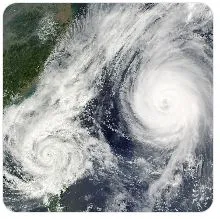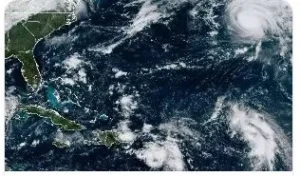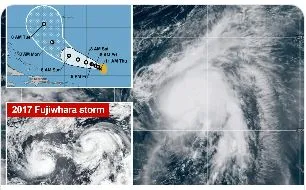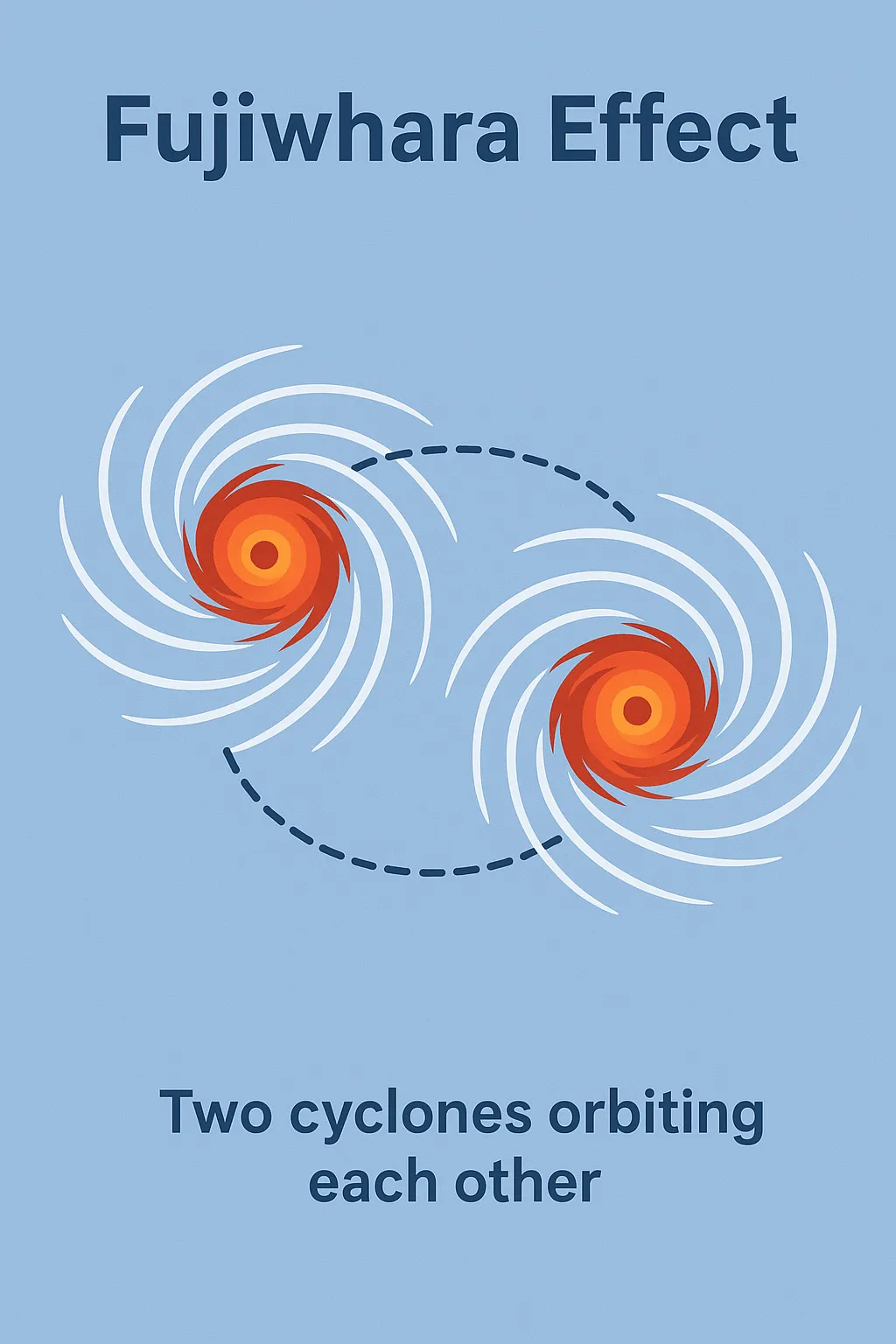Here’s a breakdown of what the Fujiwhara effect is, why it has been in the news lately, and whether it can affect people.
What is the Fujiwhara Effect?

-
The Fujiwhara effect (also called Fujiwhara interaction or binary interaction) is a meteorological phenomenon in which two nearby cyclonic vortices (e.g. tropical cyclones, typhoons, hurricanes) influence each other’s motion and begin to orbit or “dance” around a common center.
-
The name comes from Sakuhei Fujiwhara, a Japanese meteorologist, who first described a similar behavior of vortices in a 1921 paper.
-
Key features of the interaction:
• When the storms are within a certain distance threshold (for tropical systems, often ~1400 km or so) they can start to interact.
• The storms will begin to rotate around their mutual center (counter-clockwise in the Northern Hemisphere) due to their cyclonic circulations.
• If one storm is much stronger, it often dominates the interaction, and the weaker one may be drawn in, disrupted, or even absorbed.
• If they are similar in size and strength, they may orbit each other, change direction, or eventually merge, depending on many factors.
• For extratropical (mid-latitude) cyclones, a similar binary interaction can occur when within ~2000 km.
Because of the complexity of atmospheric conditions, the final outcome (merge, diversion, absorption) is not always predictable.
Why is it in the news now?

The Fujiwhara effect has come into the spotlight recently due to the possibility of interaction between Atlantic storms:
-
Meteorologists are watching Tropical Storm Humberto and a developing system (often referred to as Invest 94L) potentially coming close enough to interact via the Fujiwhara mechanism.
-
News outlets have speculated that because these systems may come within a few hundred to a thousand kilometres of each other, they might begin to rotate around a shared center, change trajectory, or one may absorb the other.
-
Such interactions complicate forecasting: small changes in storm strength, speed, or path might cause big deviations in where and how storms make landfall. So, the reason it’s trending is because there is a real possibility of a rare cyclonic “dance” in the Atlantic that could influence how these storms evolve and where they go.
Does it affect anyone (i.e. people, land, safety)?
Yes — though indirectly, through how storms behave. The Fujiwhara effect itself is a physical interaction between storms, but its consequences may impact people:
-
Change in storm track: Because the storms influence each other’s paths, regions that were not originally in danger may find themselves at risk, or vice versa.
-
Intensity or weakening: One storm may weaken or be absorbed. Sometimes extra moisture may be drawn into one system, potentially expanding its rain or wind footprint.
-
Unpredictability: Forecasts become more uncertain, and emergency planners have to account for changes in expected landfall or storm path.
-
However, the interaction itself doesn’t directly harm people — it’s the changed behavior of storms (e.g. where they hit, how strong they become) that matters.
Historical Fujiwhara Effect Cases
1. Typhoon Parma & Typhoon Melor (2009, Western Pacific)
-
These two storms came close enough to interact near the Philippines.
-
Parma stalled for several days, repeatedly bringing torrential rain to Luzon, because Melor’s presence altered its track.
-
This caused widespread flooding and landslides, making it one of the most damaging Fujiwhara interactions in modern times.
2. Typhoon Noru & Typhoon Kulap (2017, Western Pacific)

-
Noru, already powerful, interacted with Kulap.
-
Kulap was absorbed, and Noru intensified into a super typhoon.
-
This interaction extended Noru’s life cycle, making it one of the longest-lived Western Pacific typhoons on record.
3. Hurricane Hilary & Hurricane Irwin (2017, Eastern Pacific)
-
Both storms were active off the coast of Mexico.
-
They performed a partial Fujiwhara “dance,” with Hilary’s circulation helping steer Irwin back westward instead of towards land.
-
While spectacular, the interaction mostly stayed over the ocean, sparing populated regions.
4. Typhoon Pat & Typhoon Ruth (1991, Western Pacific)
-
These typhoons orbited around each other and eventually merged.
-
Their interaction caused erratic paths that complicated forecasting.
5. Hurricane Ione & Hurricane Kirsten (1974, Eastern Pacific)
-
A classic case where two hurricanes orbited each other in a Fujiwhara pattern before drifting apart.
-
It was one of the first well-documented Fujiwhara events in the Eastern Pacific thanks to satellite imagery.
Key Point:
The Fujiwhara effect doesn’t always mean disaster — sometimes storms just orbit and drift apart harmlessly. But in other cases (like Parma–Melor), it can trap storms near land, leading to prolonged flooding and destruction.
